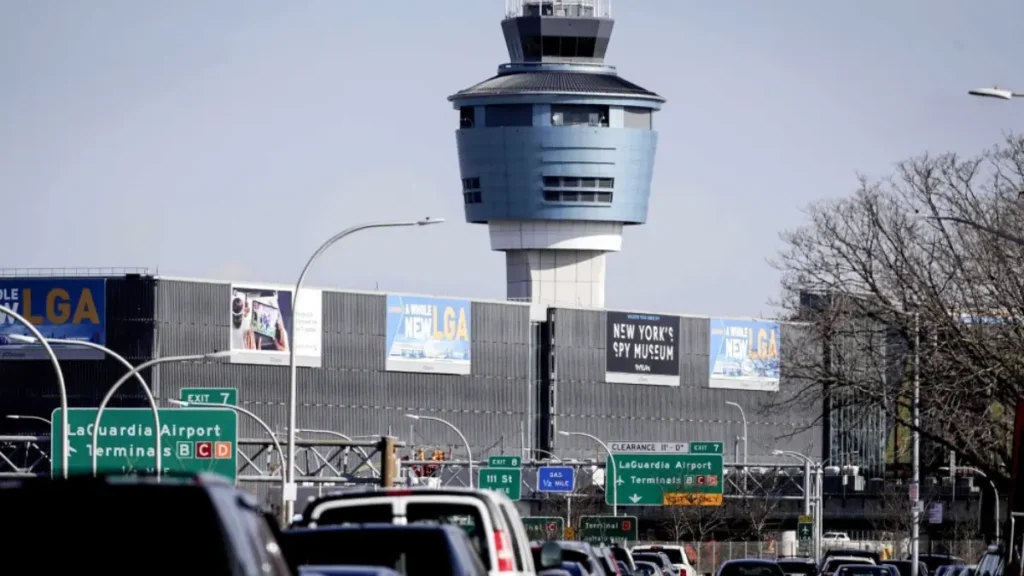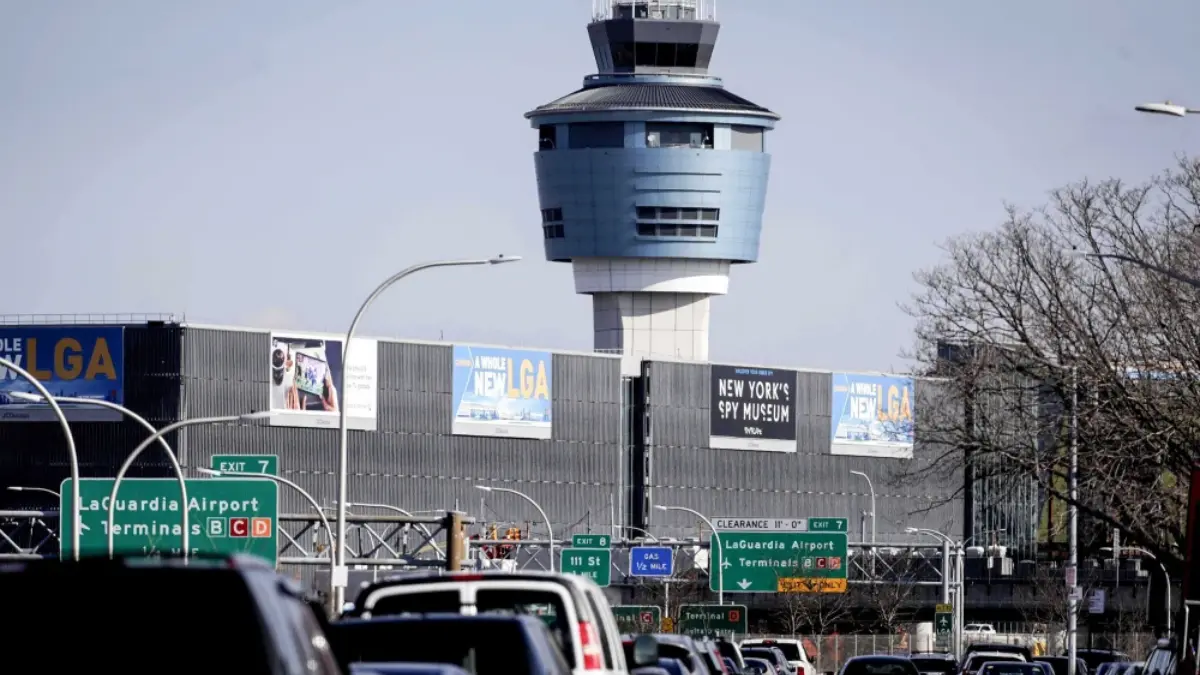The LaGuardia taxiing accident involved two Delta Connection jets operated by Endeavor Air. Learn details about the incident, causes, safety measures, and what it means for aviation safety.
LaGuardia Taxiing Accident: Delta Connection Jets Collide

On October 1, 2025, New York’s LaGuardia Airport experienced another aviation scare when two Delta Connection regional jets clipped each other during ground movement. This LaGuardia taxiing accident involved CRJ-900 aircraft operated by Endeavor Air, a Delta Air Lines subsidiary. Although the collision was low-speed, the event raised renewed concerns over airport safety, close calls, and ground operations.
In this article, we explore the full details of the LaGuardia taxiing accident, the sequence of events, the response from Delta and authorities, and what it means for the broader issue of aviation safety.
What Happened in the LaGuardia Taxiing Accident?
The LaGuardia taxing accident occurred around 9:58 p.m. at LaGuardia Airport in Queens, New York. Two Endeavor Air flights, both branded as Delta Connection services, came into contact while taxiing:
- Flight 5155: Scheduled to depart for Roanoke, Virginia.
- Flight 5047: Arriving from Charlotte, North Carolina.
Official Reported Details
| Flight Number | Route | Passengers | Crew | Incident Role |
|---|---|---|---|---|
| Endeavor Air 5155 | LaGuardia → Roanoke | 28 | 4 | Wing clipped other aircraft |
| Endeavor Air 5047 | Charlotte → LaGuardia | 57 | 4 | Fuselage struck during taxi to gate |
Preliminary findings suggest that the wing of Flight 5155 made contact with the fuselage of Flight 5047 while both were taxiing at low speed.
Passenger and Crew Impact
The LaGuardia taxiing accident did not result in serious injuries, but Delta confirmed that one flight attendant sustained a minor injury. EMTs at the airport treated the crew member on the scene.
Both flights were carrying fewer than 100 passengers combined, and all passengers were safely escorted off the aircraft after the collision.
Delta’s Response to the LaGuardia Taxiing Accident
Delta Air Lines issued an official statement:
- They apologized to customers and emphasized that safety comes before all else.
- The airline assured passengers that they are cooperating with all relevant authorities.
- Customer service teams at LaGuardia worked overnight to rebook passengers affected by the LaGuardia taxiing accident.
This quick response highlights Delta’s attempt to maintain confidence in their safety standards following the incident.
Investigations into the LaGuardia Taxiing Accident
Three major organizations will review the collision:
- Port Authority of New York and New Jersey – airport oversight.
- Federal Aviation Administration (FAA) – operational and safety regulations.
- National Transportation Safety Board (NTSB) – independent accident analysis.
The focus will be on:
- Taxiway coordination.
- Pilot communication with air traffic control.
- Possible misjudgment in spacing between aircraft.
Aviation Safety Concerns
The LaGuardia taxiing accident is not an isolated event. Ground collisions and near misses have become a growing concern in U.S. aviation.
Recent Similar Incidents
| Date | Location | Incident | Outcome |
|---|---|---|---|
| July 2025 | North Dakota | B-52 bomber and SkyWest jet in same airspace | Avoided collision |
| April 2025 | Ronald Reagan National Airport | Passenger plane clipped another on ground | Minor damage |
| February 2025 | Chicago Midway | Landing plane had to abort due to runway crossing jet | No injuries |
These close calls highlight systemic challenges in air traffic control, runway management, and airport congestion.
LaGuardia Airport: A Busy Hub with Risks
LaGuardia Airport, located in Queens, New York, is one of the busiest airports in the United States. Its limited space, intersecting taxiways, and high traffic volume increase the risk of incidents like the LaGuardia taxiing accident.
Key facts about LaGuardia:
- Operates more than 700 daily flights.
- Serves over 30 million passengers annually.
- Known for congested airspace in the New York metropolitan area.
Given these conditions, even minor miscommunication can lead to collisions on the ground.
Aircraft Involved: CRJ-900 Jets
Both planes in the LaGuardia taxiing accident were CRJ-900 regional jets. These aircraft are commonly used for short-haul regional routes and can carry around 76–90 passengers.
While the CRJ-900 is considered safe, its long wingspan relative to its fuselage length may pose challenges when maneuvering in tight airport taxiways.
Safety Measures After the LaGuardia Taxiing Accident
The LaGuardia taxiing accident underscores the need for stronger safety protocols. Some measures already under discussion include:
- Improved ground radar systems to track taxiing aircraft.
- Stricter air traffic control coordination during peak hours.
- Enhanced pilot awareness training for congested airports.
- Implementation of automated collision warning systems for taxiways.
Airline unions and safety experts have urged authorities to adopt new technology that could help prevent future ground incidents.
Passenger Reactions
Travelers involved in the LaGuardia taxiing accident reported being shaken but relieved that the incident was not worse. Many expressed frustration about delays but praised the professionalism of crew and ground staff.
Social media posts quickly circulated, raising concerns about airport safety and Delta’s operational oversight.
Why the LaGuardia Taxiing Accident Matters
The LaGuardia taxiing accident is more than just a low-speed collision. It:
- Highlights increasing congestion at U.S. airports.
- Brings attention to the importance of modernizing air traffic control systems.
- Raises questions about Delta’s operational procedures.
- Serves as a reminder of the constant risks involved in aviation, even on the ground.
FAQs on the LaGuardia Taxiing Accident
Q1: What was the LaGuardia taxiing accident?
The LaGuardia taxiing accident involved two Delta Connection CRJ-900 jets operated by Endeavor Air that clipped each other while taxiing at New York’s LaGuardia Airport.
Q2: Was anyone injured in the LaGuardia taxiing accident?
Yes, one flight attendant sustained a minor injury and was treated by EMTs on the scene.
Q3: Which flights were involved in the LaGuardia taxiing accident?
Endeavor Air Flight 5155 (to Roanoke) and Flight 5047 (from Charlotte) were involved.
Q4: What type of planes were in the LaGuardia taxiing accident?
Both aircraft were CRJ-900 regional jets.
Q5: What caused the LaGuardia taxiing accident?
Preliminary reports suggest the wing of one plane clipped the fuselage of another while both were taxiing at low speed.
Q6: Who is investigating the LaGuardia taxiing accident?
The FAA, NTSB, and the Port Authority of New York and New Jersey are conducting investigations.
Q7: How many passengers were on board during the LaGuardia taxiing accident?
Flight 5155 had 28 passengers, while Flight 5047 carried 57 passengers.
Q8: Did Delta respond to the LaGuardia taxiing accident?
Yes, Delta apologized, emphasized safety, and assisted passengers with rebooking.
Q9: Has LaGuardia Airport had similar incidents before?
Yes, LaGuardia and other busy airports have experienced ground collisions and near misses due to congestion.
Q10: What measures could prevent future taxiing accidents?
Upgrading ground radar, stricter traffic control, and automated warning systems could help reduce the risk of such incidents.
Conclusion
The LaGuardia taxiing accident highlights the fragility of aviation safety, even at low speeds on the ground. While no serious injuries were reported, the incident raises questions about airport congestion, pilot coordination, and the need for advanced safety systems.
Delta’s swift response and cooperation with the FAA and NTSB show a commitment to safety, but the incident adds to a growing list of aviation close calls in 2025. Passengers, regulators, and airlines will be watching closely to ensure that lessons learned from the LaGuardia taxiing accident help prevent future mishaps.

